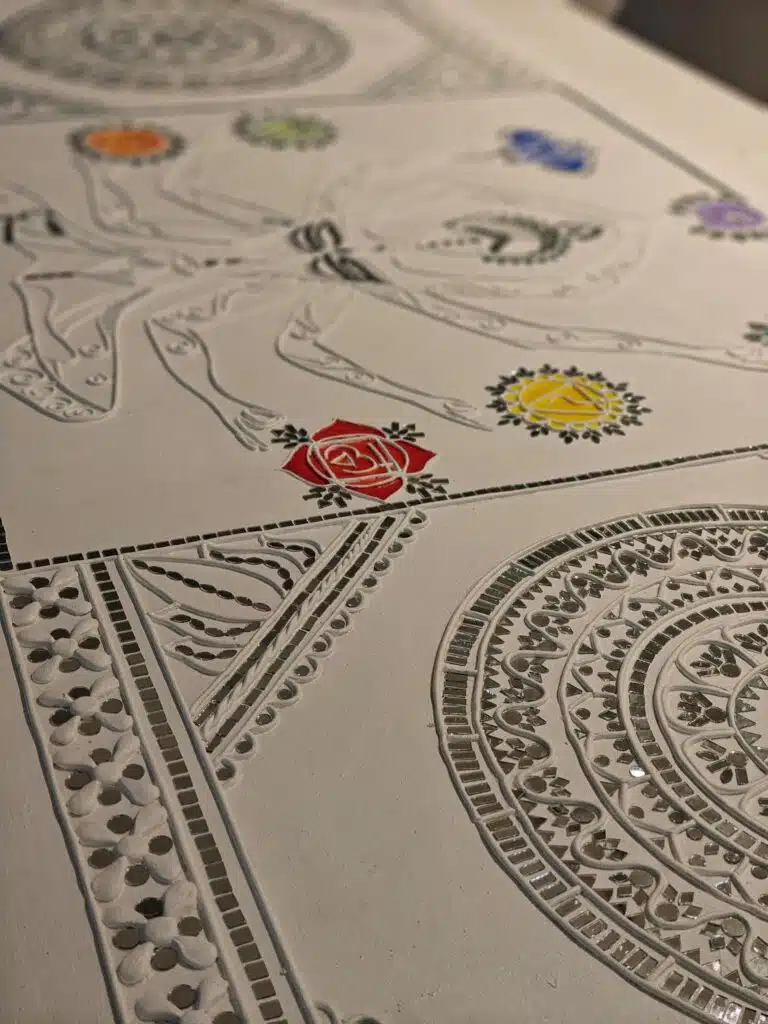
Daoist spirituality places deep emphasis on rituals, offerings, and the natural world. Temples honour deities and ancestors, while mountains, rivers, and seasons are seen as direct expressions of the Dao. These practices connect people with balance, protection, and the cosmic order that shapes all life.
Rituals and Offerings in Daoist Temples
Daoist temples are living spaces of worship, reflection, and ritual. Inside, incense coils burn slowly, creating rising trails of smoke that symbolise prayers travelling upward. Offerings of fruit, rice wine, or paper money are laid at altars, not as bribes but as acts of respect and acknowledgement. The temple becomes a meeting point between human life and the invisible forces of the Dao.
These rituals often honour specific deities, many of whom represent natural forces or cosmic principles. The Jade Emperor, Queen Mother of the West, or city gods are not viewed as separate from the Dao but as expressions of it, channels through which balance and order are maintained. By making offerings, worshippers align themselves with that order and seek harmony in return.
Ancestors and the Continuity of Spirit
Equally important is the honouring of ancestors. Families bring offerings to household altars or community temples, believing that the line between the living and the dead is thin. Ancestors are seen as protectors who continue to influence the well-being of their descendants.
The act of offering is about gratitude as much as it is about request. Food, incense, or even simple bows show respect for those who came before. In Daoist thought, this reinforces continuity: just as rivers flow into seas, the spirit of past generations flows into present lives.
Rituals as a Form of Balance
Daoist rituals are rarely about spectacle alone. They aim to restore balance when something has been disturbed. A household may invite priests to perform rites after illness or misfortune, not as punishment avoidance but as a way of correcting imbalance. Chanting, drumming, and offerings create a bridge between heaven, earth, and humanity, reaffirming that none can exist in isolation.
Protection also plays a role. Rituals may ask for safety from harmful spirits or for guidance in uncertain times. In doing so, the community acknowledges its place in a wider cosmic network. Rituals are less about control and more about partnership with forces larger than oneself.
Nature as Teacher
Daoist spirituality doesn’t confine itself to temples. Step outside, and nature itself becomes a scripture. Mountains are revered as pillars that connect earth and sky. Rivers, always flowing yet never forced, mirror the principle of wu wei — effortless action. Seasons show the rhythm of yin and yang: light and dark, growth and decline, renewal and rest.
To a Daoist, nature is not a backdrop but a teacher. Observing how a tree bends without breaking in the wind teaches resilience. Watching water wear down stone shows patience and persistence. The lessons are not hidden; they are there for anyone who chooses to see.
Alignment Through the Natural World
Spending time in nature is more than leisure — it is worship. Climbing a mountain is both a physical and spiritual ascent. Sitting beside a stream becomes meditation. Daoist monks often live in remote mountain temples not to escape society but to remain close to the living Dao expressed in rock, water, and sky.
For laypeople, even short encounters with nature can be acts of alignment. A walk under autumn leaves reminds one of cycles; the stillness of winter mornings invites quiet reflection. Every season holds meaning, and by paying attention, individuals return themselves to the Dao’s rhythm.
Rituals and Nature as Complementary Paths
Rituals in temples and lessons from nature are not opposites — they complement each other. Offerings acknowledge the unseen forces that shape life, while time outdoors reveals those same forces embodied in earth and sky. One path is communal and symbolic; the other is personal and experiential.
Together, they create a whole practice. A person may light incense to honour ancestors in the morning, then spend the afternoon walking a riverside trail. Both actions cultivate balance, both affirm connection, and both guide the spirit toward harmony with the Dao.
Living the Dao Daily
Daoist spirituality does not demand constant ceremony or retreat into the mountains. Instead, it invites simple attentiveness. Eating seasonal food respects natural cycles. Offering thanks to family ancestors grounds identity. Sitting quietly by water reconnects body and breath.
Through these small rituals and acts of awareness, people find protection, balance, and alignment without separating the sacred from the everyday. The Dao flows in temples, in rivers, and in the ordinary rhythms of life — always available, always teaching.
FAQs
Why are offerings important in Daoist practice?
Offerings show respect to deities and ancestors, creating harmony between humans and the spiritual world. They are gestures of gratitude and balance.
How does nature connect to the Dao?
Mountains, rivers, and seasons are seen as direct expressions of the Dao. Observing them teaches harmony, patience, and the principle of balance.
Do Daoists only worship in temples?
No. While temples are central, many Daoists also find spiritual connection in nature and in everyday acts that reflect alignment with the Dao.
- Australia
- Arts & Style (100)
- Automobile (287)
- Business (5,716)
- Business and Entrepreneurship (166)
- Career Development (55)
- Climate & Environment (26)
- Creative (34)
- Culture (1,561)
- Beauty (284)
- Skincare (243)
- Cultural Studies (75)
- Digital Life (73)
- Energy Healing (31)
- Fashion (1,039)
- Clothing (697)
- Fashion Design (234)
- Philosophy (7)
- Morality (6)
- Religion (17)
- Sports (116)
- Beauty (284)
- Digital Marketing (344)
- DIY and Crafts (15)
- Economics (8)
- Education (1,282)
- Entertainment (198)
- Faith & Spiritual (10)
- Fashion and Beauty (155)
- Finance and Money Management (211)
- Fitness and Exercise (32)
- Food and Drink (171)
- Game (142)
- Health and Wellness (1,098)
- Home and Garden (389)
- Law (143)
- Lifestyle (1,381)
- Health (685)
- Home (389)
- Architecture (99)
- Interior Design (216)
- Rental Property (27)
- Pets (76)
- Relationships (70)
- Restaurants (19)
- Literature (7)
- Media (272)
- Packaging (41)
- Politics (1)
- Real Estate (257)
- Science and Nature (14)
- SEO (141)
- Social Media Marketing (51)
- Software Development (225)
- Sports and Fitness (44)
- Technology (851)
- Artificial Intelligence (239)
- Blockchain (61)
- Data Science (114)
- Gadgets (144)
- Security (141)
- Transportation (111)
- Travel & Tourism (759)
- Uncategorized (1,985)
- World (62)
- International (59)
- Everything You Need to Know About Professional Turf Installation in Croydon

- (no title)
- How the Ben Spies Racing Suit Jacket Combines Track Engineering with Street Comfort
- QuickBooks Payroll Not Working? Fix QuickBooks Error 3007 & Error 6138 105 – Call +1-(855)-955-1942 for Expert Help

- How Medical Billing and Coding Outsourcing Reduces Overhead Costs


Rituals, Offerings, and Nature in Daoist Spirituality

Digitizing for Embroidery: Why It’s the Key to Perfect Stitching

Devo, Dada, and the Idea of De-Evolution

Hire Lippan Artist | Traditional Kutch Artwork for Elegant Decor

Why Is Custom Steel Fabrication Becoming Increasingly Popular?

Rituals, Offerings, and Nature in Daoist Spirituality

Why Should You Add Retaining Wall To Your Property
